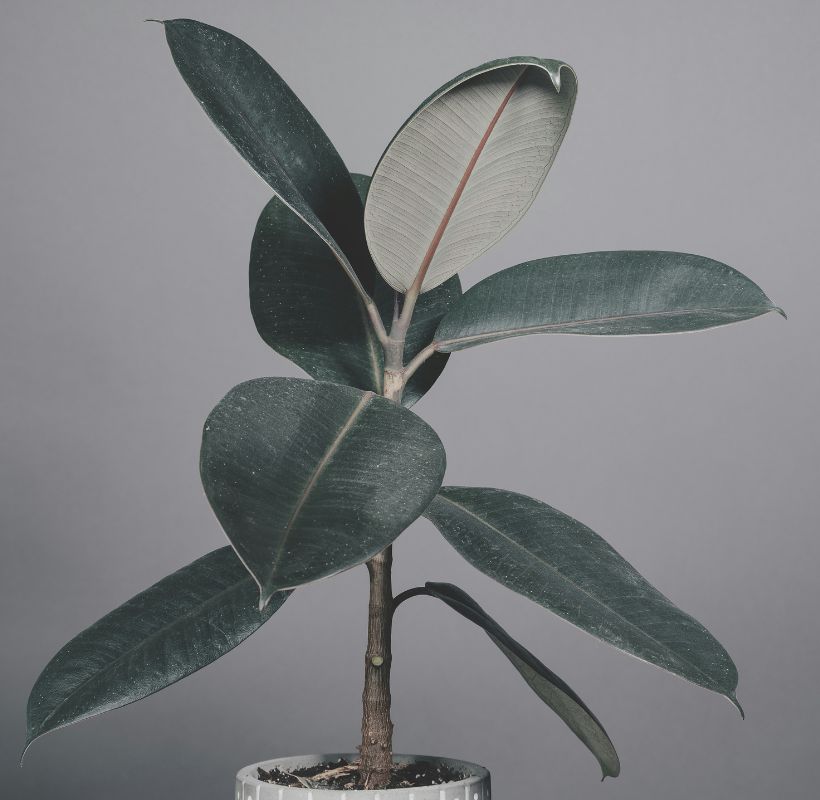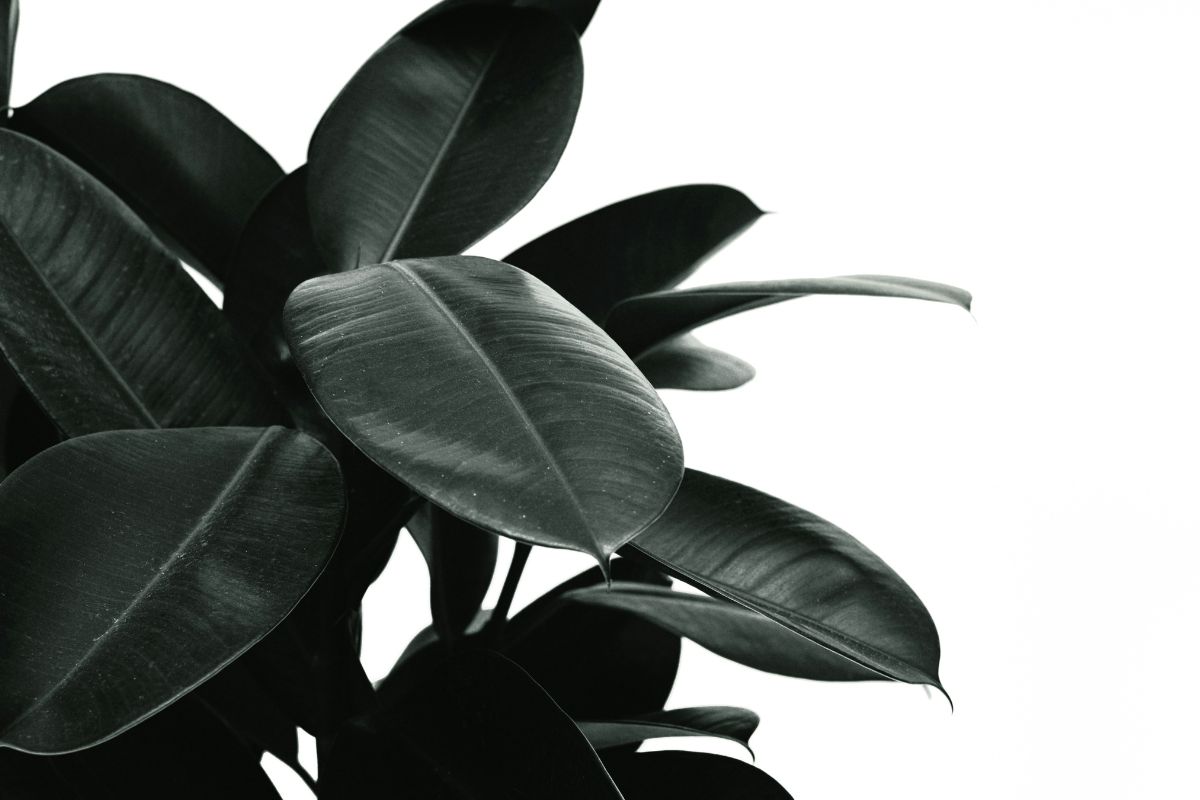The Rubber Plant Benefits and Complete Care Guide
If you’re looking to add a touch of elegance to your home or office, the Rubber Plant (Ficus elastica) is an excellent choice. Known for its glossy, large green leaves and upright growth, this tropical beauty has earned a place in many indoor gardens. Not only does it brighten up any space, but the Rubber Plant also offers a variety of benefits beyond its appearance. Whether you're a plant enthusiast or a beginner, this guide will help you make the most of this beautiful plant.
Why the Rubber Plant Should Be Part of Your Home

Natural Air Purifier
One of the most significant advantages of having a Rubber Plant in your space is its ability to purify the air. Rubber Plants naturally absorb carbon dioxide and release oxygen, contributing to fresher indoor air. Additionally, the Rubber Plant helps reduce the presence of harmful toxins like formaldehyde and benzene, which are commonly found in household products.
How It Works:
The plant’s large leaves are excellent at absorbing airborne toxins, making it a valuable addition to your home or office, where air quality may be compromised.
Tip: Place your Rubber Plant in areas where you spend a lot of time, like your bedroom or living room, to improve air quality.
Improves Your Interior Aesthetic
A Rubber Plant can instantly transform the ambiance of any room with its lush, dark green foliage. Its upright, tree-like structure adds vertical interest, while its bold, glossy leaves bring a touch of sophistication to your decor. Whether you're decorating a modern living room, a minimalist bedroom, or a cozy office, the Rubber Plant blends seamlessly with a variety of styles.
Design Tips:
Pair it with sleek furniture or neutral tones to create a balanced contrast.
For a stylish touch, place it in a decorative pot that complements your space.
Promotes Well-Being and Reduces Stress
Having plants like the Rubber Plant around has been shown to reduce stress and anxiety. The presence of greenery can have a calming effect, creating a more peaceful environment. Additionally, the act of taking care of plants can be therapeutic, promoting mindfulness and relaxation.
How It Helps:
Studies have shown that indoor plants help lower cortisol levels, the hormone associated with stress.
The simple task of tending to a plant can promote relaxation and a sense of accomplishment.
Helps Maintain Humidity
In addition to purifying the air, Rubber Plants also help maintain the moisture levels in the air through a process called transpiration. This is especially helpful in homes or offices with dry indoor air caused by heating or air conditioning systems.
Benefits of Higher Humidity:
It can help prevent dry skin and respiratory issues, especially during the colder months.
A more humid environment benefits both your plants and yourself.
Tip: Position your Rubber Plant near other indoor plants to create a mini eco-system that further improves the humidity in your space.
Improves Acoustic Environment
While not often highlighted, plants like the Rubber Plant also contribute to better acoustics in your home. The broad leaves absorb sound, making them effective at reducing echoes and softening noise in large or open-plan rooms. This can be especially useful in busy or noisy environments, where creating a quieter space can improve focus and comfort.
Where to Place It:
Near windows to absorb outdoor noise or in the corners of rooms to minimize indoor echoes.
In open spaces to create a more acoustically pleasant environment.
A Natural Stress Buster for Workspaces
Adding a Rubber Plant to your workspace can boost productivity by creating a visually appealing and calming environment. The greenery adds a natural touch to your office, helping to reduce stress and improve focus. Plants in work environments have also been shown to promote creativity and overall job satisfaction.
Benefits in Offices:
Adds a calming presence to busy workspaces.
Enhances focus and mental clarity, fostering a more productive and energetic workday.
How to Care for Your Rubber Plant
While the Rubber Plant is relatively low-maintenance, it does have specific care needs to thrive. Here’s a comprehensive care guide to keep your Rubber Plant healthy and happy.

Optimal Light Conditions
The Rubber Plant thrives in bright, indirect light. Although it can handle some direct sunlight, extended exposure may cause leaf scorch. It also can adapt to lower light conditions, but it may not grow as vigorously.
Care Tips:
Place your Rubber Plant near an east- or west-facing window to give it plenty of bright, indirect light.
Rotate the plant occasionally to promote even growth and prevent it from leaning toward the light.
Watering: Know When to Water
Overwatering is a frequent mistake that may result in root rot. Rubber Plants prefer to dry out a bit between waterings, so it's important to ensure the soil is dry before watering again.
Watering Tips:
Water the Rubber Plant when the top 1-2 inches of soil are dry to the touch. This prevents waterlogging while keeping the plant hydrated.
Ensure the pot has drainage holes to prevent water buildup.
Soil Choice
Rubber Plants thrive in well-draining soil. A standard potting mix works well, but adding some perlite or coarse sand can improve drainage and prevent root rot.
Soil Recommendations:
Use a potting mix formulated for tropical plants, or create your own blend with regular potting soil mixed with perlite for better drainage.
Temperature and Humidity
Rubber Plants are best kept in warm environments between 60°F and 75°F (16°C to 24°C). They can tolerate some fluctuations, but temperatures below 50°F (10°C) can damage the plant. Rubber Plants also prefer moderate to high humidity levels.
Care Tips:
Keep your Rubber Plant away from drafts, air conditioners, or heaters, which can cause temperature stress.
To increase humidity, consider placing the plant on a humidity tray or using a humidifier, especially in dry climates.
Pruning and Maintenance
Pruning is necessary to keep your Rubber Plant's shape in check and encourage healthy growth. Removing dead or damaged leaves also helps prevent disease and encourages the plant to focus its energy on producing new growth.
Pruning Tips:
Regularly remove any yellowing or dead leaves, especially at the base.
Trim back the plant’s top if it’s becoming too tall or leggy to maintain its shape.
Repotting: When and How
Rubber Plants can grow quite large, so repotting is necessary every couple of years. Select a pot 1-2 inches wider in diameter than the current one to allow room for root growth.
Steps for Repotting:
Carefully remove the Rubber Plant from its current pot, taking care not to damage the roots.
Fill the new pot with fresh potting mix, place the plant inside, and water thoroughly.
Conclusion
The Rubber Plant is not only an elegant addition to your home or office but also offers numerous benefits that improve the quality of your indoor environment. From purifying the air to boosting your mood and enhancing humidity, this hardy plant is an excellent choice for anyone looking to add a touch of nature to their space. With a little attention to its care needs, your Rubber Plant will thrive for years, making it a long-lasting investment in both beauty and health.

